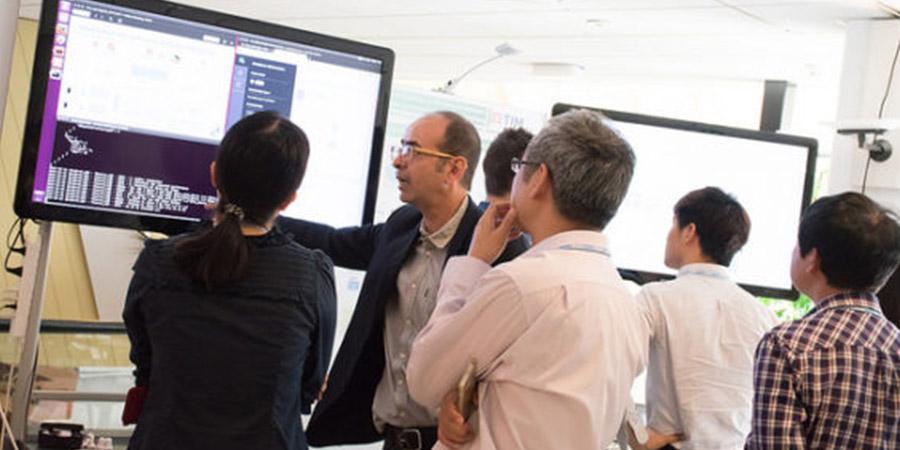Network softwarization and slicing took centre stage at a 5G workshop and demo day held in Geneva, 11 July 2017, in conjunction with a two-week series of meetings to progress the work of ITU's standardization expert group for future networks, ITU-T Study Group 13 (SG13).
"Is 5G the revitalization of the telecoms business? Our answer is - yes, it is." This is the view of Hyungsoo Kim, KT, speaking to the new business opportunities that 5G will present network operators as they support ICT-enabled innovation in sectors such as transport, healthcare, smart cities, agriculture and manufacturing.
"Here we see the fundamental importance of software-driven network orchestration," said Chaesub Lee, Director of the ITU Telecommunication Standardization Bureau. "5G systems will be required to support an enormous number of diverse ICT applications. Our aim is to ensure that every application is able to perform to its full potential."
Technical coordination will be essential in establishing 5G infrastructure
The workshop brought together a diverse set of interests - standards bodies, industry associations, operators, manufacturers, and academic and research institutes - to discuss the networking innovations necessary to achieve the 5G vision.
The critical importance of technical coordination was a recurring theme throughout the workshop. Standards bodies, industry associations and open-source initiatives are working to coordinate their complementary contributions to 5G, and ICT industry players are increasing their collaboration with new clients in 'vertical' sectors such as transport, healthcare and smart cities.
SG13 Vice-Chairman Scott Mansfield, Ericsson, highlighted one of the coordination mechanisms provided by ITU: "The JCA IMT-2020 [Joint Coordination Activity on IMT-2020] is going to provide us with a place where people can contribute what work is going on in all of the different standards bodies that are in the ecosystem."
Dynamic allocation of 5G network resources with softwarization and slicing
Alongside enhanced mobile broadband and the Internet of Things (IoT), 5G will support ultra-reliable and low-latency communications for applications such as automated driving, remote medical surgery, collaborative robotics and advanced virtual reality.
Network softwarization and slicing, underpinning deeply programmable networks able to be sliced into virtual networks with very specialized capabilities, will give networks the agility required to support the specific requirements of any particular 5G application.
The ambitious performance targets of 5G systems and the wide variety of envisioned 5G applications will demand future networks to be agile all-around players able to perform a wide array of specialized functions.
New ITU standards for network management enter the close of their development cycle
Two weeks of SG13 working group meetings have concluded with the first-stage approval of three new ITU standards, one providing 5G terms and definitions and two targeted at 5G network orchestration and management:
- "Terms and definitions for IMT-2020" provides a foundational set of terminology to be applied universally across 5G-related standardization work.
- "IMT-2020 network management framework" establishes a framework and related principles for the design of 5G networks.
- "IMT-2020 network management requirements" describes the capabilities required to support emerging 5G services and applications.
SG13 in addition achieved first-stage approval of a new 'Supplement' to Y-series ITU standards, a supplement which provides an overview of "standardization and open-source activities related to network softwarization of 5G".
The new ITU standards and supplementary text represent the continued formalization of the output of the ITU-T Focus Group on network aspects of IMT-2020, a group charged with investigating 5G networking demands to be addressed by SG13 standardization work.










